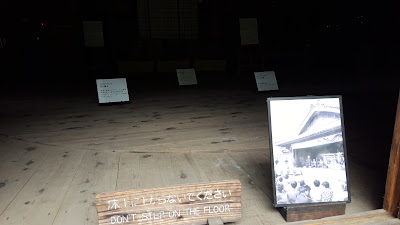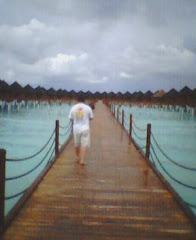川崎にある民家園の探索の続き。
This building is made the same way as the World Heritage Site in Gifu.
この建物は岐阜にある世界遺産と同じ作り方です。
Shishiotoshi / 獅子落とし
Another building with an irori.
昔の民家は大体囲炉裏ありますね。
The Emukai House / 旧江向家住宅
The Yamada House / 旧山田住宅

The Nohara House / 旧野原家住宅
The Yamashita House / 旧山下住宅
Going through this tunnel will lead us to other half of the Japan Open-Air Folk House Museum. I had not realized how large this place was.
トンネルまで来たということは民家園の半分くらいは見ました。自分もこの広さにびっくり。
I spotted a different kind of a visitor on one of the signs.
民家園で別の客を発見。
The Sakuda House / 旧作田家住宅
Storehouse on Stilts / 沖永長部の高倉
The Hirose House / 旧広瀬家住宅
The Kitamura House / 旧北村家住宅
The Koizumi House Outhouse / 小泉家外便所
Inside the Kiyomiya House / 旧清宮家住宅の中
Hut for storing firewood / 棟持柱の木小屋
The Itoh House / 旧伊藤家住宅
Kokagesan Shrine / 蚕影山祠堂
Volunteer made a grasshopper out of some type of leaf.
ボランティアがなんかの葉っぱでバッタを作りました。
It also looks like a snake shed his skin here.
この辺で蛇が脱皮したみたい。
The Iwasawa House / 旧岩澤家住宅
Kabuki Stage from Funakoshi / 船越の舞台
Revolving stage at the Kabuki Theater called a naraku.
奈落、上が回り舞台です。
The Sugawara House / 旧菅原家住宅
Ferryman's Hut / 船頭小屋
You can see the rings the used to set the poles in to move the hut.
Heart-shaped leaf / 心の形してる葉
And we completed the Japan Open-Air Folk Museum stamp rally as well (although it was only intended for kids).
民家園のスタンプラリーも完了しました。(これは本当子供たちだけの遊びですけどね。)
And now it was time for lunch. Of course we would be eating inside the outdoor museum, but that will be for the next post.
結構歩く回ったので丁度昼食の時間になりました。もちろん民家園の中で食べますよ。でもそれはまた別のネタで話します。
























































.jpg)



No comments:
Post a Comment